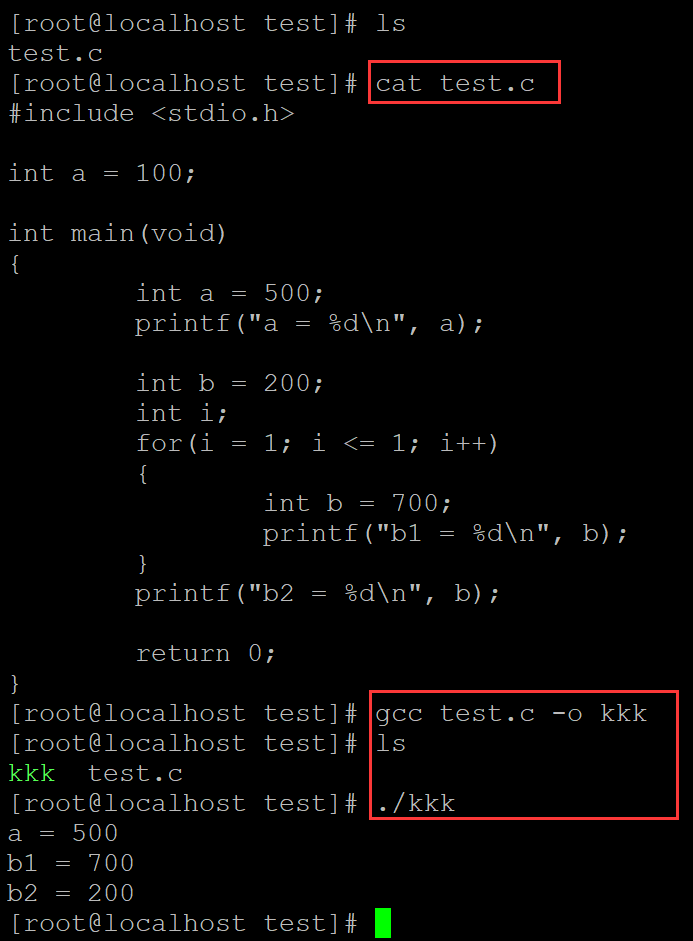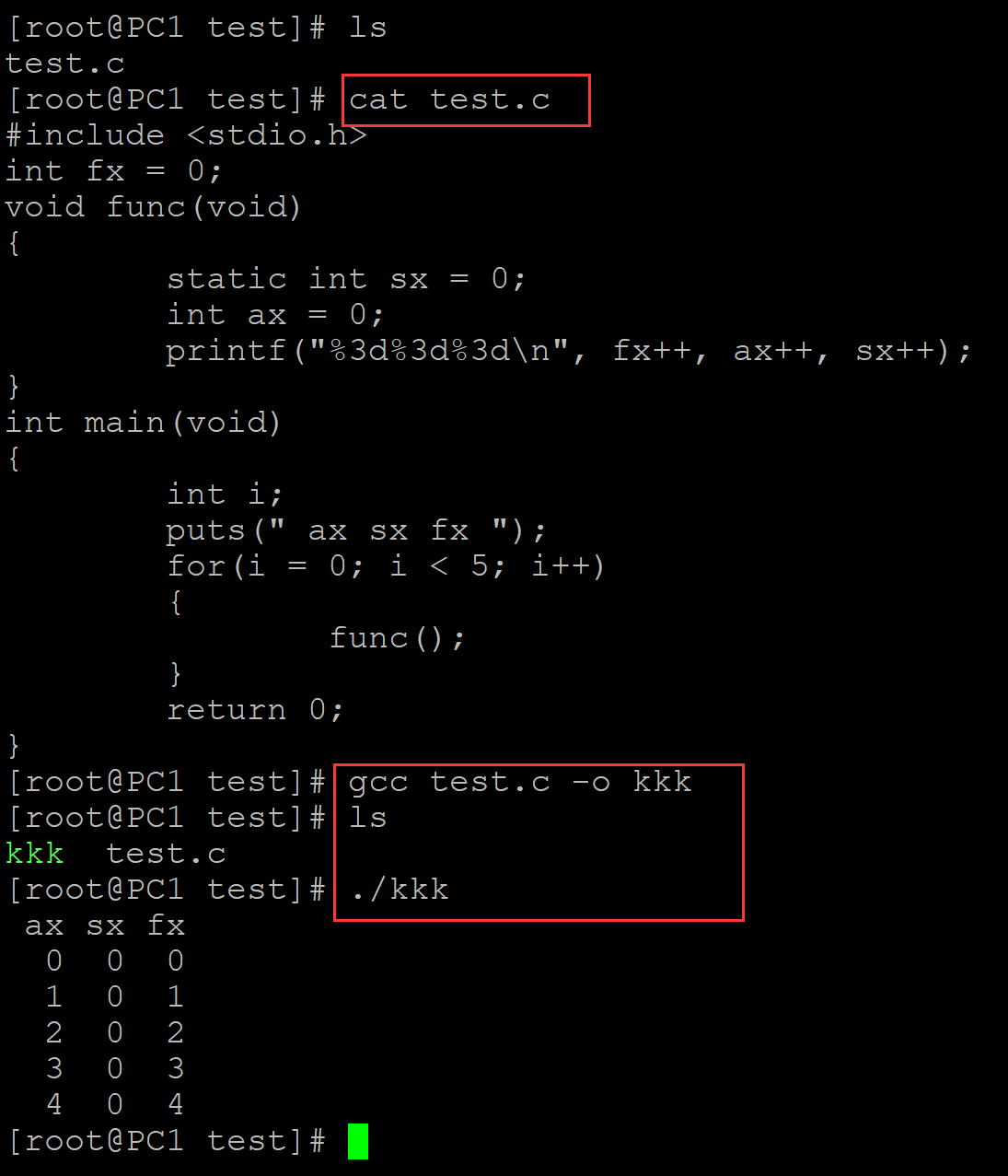c语言中作用域和存储期
001、作用域:快作用域,文件作用域; 指的是变量的作用范围; 作用域控制的是变量的作用范围
如下程序:
[root@localhost test]# ls test.c [root@localhost test]# cat test.c ## 测试c程序 #include <stdio.h> int a = 100; ## 文件作用域 int main(void) { int a = 500; ## 块作用域可见 printf("a = %d\n", a); int b = 200; ## 外层块作用域 int i; for(i = 1; i <= 1; i++) { int b = 700; ## 内层块作用域 可见, 具有块作用域的变量,其作用范围只在程序块中 printf("b1 = %d\n", b); } printf("b2 = %d\n", b); ## 此处的变量是b = 200的变量 return 0; } [root@localhost test]# gcc test.c -o kkk [root@localhost test]# ls kkk test.c [root@localhost test]# ./kkk a = 500 b1 = 700 b2 = 200

。
002、存储期:自动存储期,静态存储期; 存储期控制的是变量的生存期(是在一个程序块内,还是整个程序的结束)。
如下程序:
[root@PC1 test]# ls test.c [root@PC1 test]# cat test.c ## 测试程序 #include <stdio.h> int fx = 0; ## 在程序快外声明的变量,具有静态存储期 void func(void) { static int sx = 0; ## 使用关键字static声明的变量, 具有静态存储期 int ax = 0; ## 具有自动存储期 printf("%3d%3d%3d\n", fx++, ax++, sx++); } int main(void) { int i; puts(" ax sx fx "); for(i = 0; i < 5; i++) ## 函数连续调用了5次,具有自动存储期的变量在一个程序快结束时,变量消失,如ax,每次调用都为0; { ## 而具有静态存储期的变量fx和sx,在程序结束前都可见,因此逐次递增 func(); } return 0; } [root@PC1 test]# gcc test.c -o kkk [root@PC1 test]# ls kkk test.c [root@PC1 test]# ./kkk ax sx fx 0 0 0 1 0 1 2 0 2 3 0 3 4 0 4

。




 浙公网安备 33010602011771号
浙公网安备 33010602011771号